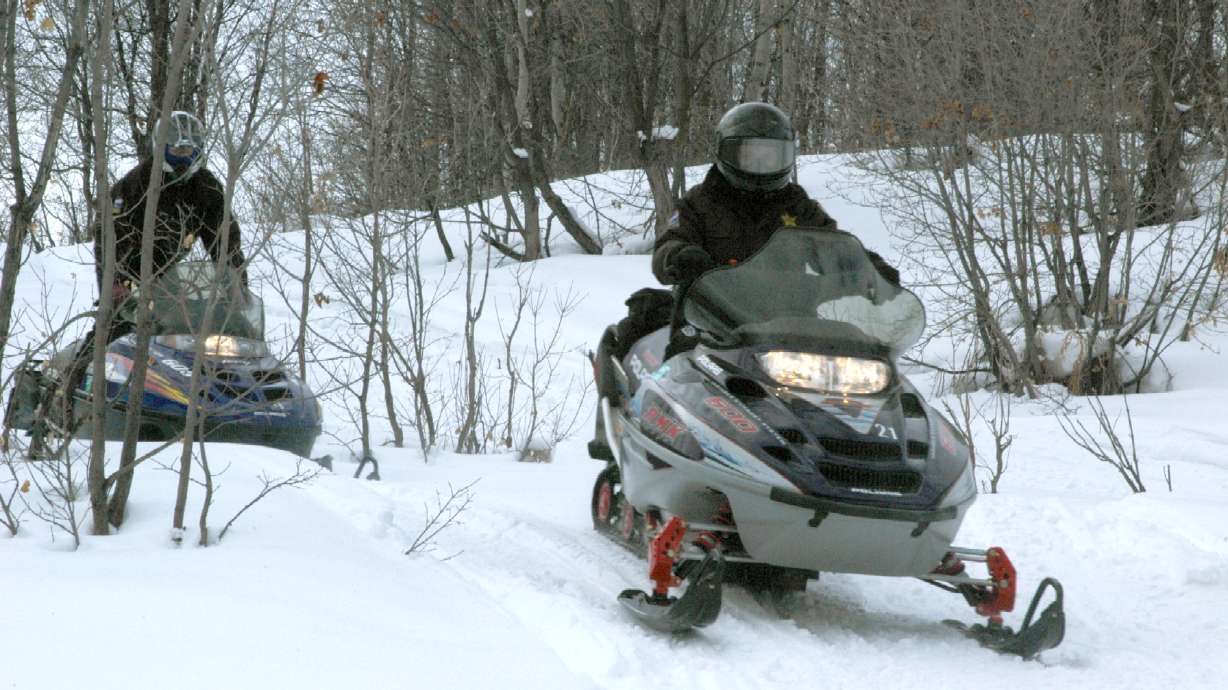Estimated read time: 4-5 minutes
This archived news story is available only for your personal, non-commercial use. Information in the story may be outdated or superseded by additional information. Reading or replaying the story in its archived form does not constitute a republication of the story.
SALT LAKE CITY — With the recent snowstorms, many Utahns may be heading outdoors to enjoy the fresh powder. However, before going snowmobiling or skiing in the backcountry, Utahns should be aware of how to avoid causing an avalanche and what to do if you are caught in one.
In 2014, 12 snowmobilers, 25 skiers and two snowboarders were caught in an avalanche in Utah, according to the Utah Avalanche Center. Utah State Parks off-highway vehicle program manager Chris Haller said on average, one of those avalanches results in a fatality each year.
“That is just one too many,” he said. “We’d like to keep that at a zero.”
Haller said the biggest way to prevent causing or getting caught in an avalanche is to be educated about the terrain and conditions. People should always check the Utah Avalanche Center website before going snowmobiling, skiing or snowboarding in the backcountry, he said. The Utah Avalanche Center gives updated reports of what current snow conditions are like, how high the avalanche danger is in an area and which areas have steep slopes.
The probability of an avalanche increases after a snowstorm because the new snow can create a separate layer on top of old, hard snow, Haller said. The new snow doesn’t mesh with the old snow and can easily slide off when triggered by something, causing an avalanche.
Along with educating yourself and being aware of snow conditions, here are six ways to protect yourself against an avalanche.
Have the right equipment
In the event that you do trigger an avalanche while snowmobiling or skiing, make sure that you have the proper gear with you so that you can be rescued or help rescue someone else. Always wear a helmet and have a shovel, probe and avalanche beacon, Haller said.
Check the batteries on the beacon and change them annually to ensure they work properly when needed. Educate yourself and make sure you know how to work the equipment and that the software is updated. Avalanche airbags can also be a useful, life-saving tool to keep with you.
A presentation on avalanche awareness will be held at the Wasatch Mountain State Park in Midway on Feb. 21 from 10 a.m. to 1 p.m.
The lecture will be held in the Visitor Center for the first hour and then will be held at the Mill Flats parking lot for a snow pit analysis lesson. Dress warmly for snow.
Always have someone with you
Whenever you go out in the backcountry, always have someone with you or “ride with a buddy,” Haller said. If you are caught in an avalanche, that person will be be able to help locate and dig you out. They will also be able to contact officials who will be able to perform a rescue mission.
Always tell someone where you are going
Always inform someone where you are going snowmobiling and when you are coming home. Give that person the description of the vehicle you will be driving and tell them where you are going to park it. That information greatly increases the response time of emergency responders in being able to locate you if there is an accident.
Don’t ride on steep slopes or cornices
Typically, the avalanche danger is the highest when people ride snowmobiles on steep slopes or cornices, an overhanging mass of hardened snow at the edge of a precipice. Haller said people should avoid those areas and should not “high mark” on embankments because it increases the chance of triggering an avalanche.
Try to ride in mostly flat areas or at the bottom of a valley, Haller said.
Wear appropriate clothing
Related Stories:
If you are going out into the elements, always dress appropriately. Wear layers of warm clothing and always have heavy-duty gloves so you can dig yourself out if you get stuck or buried in the snow.
What to do if you are caught in an avalanche
If you are caught in an avalanche, try to “swim with the snow,” Haller said. You will be tossed around, but try to swim to the side of the avalanche — don't waste energy swimming against it. Keep your mouth covered and form an air pocket around your face with your arm so you will be able to breathe when the snow stops moving.
“That rolling snow will be just like concrete when it stops,” Haller said. “You aren’t going to be able to move.”
While keeping an air pocket around your face, also try to extend an arm or leg towards the surface so you are easier to locate, Haller said. The beacon will direct emergency responders to your location and you will be easier to find if you have a limb sticking through the snow.
Knowledge Is Powder - Snowmobiling from Trent Meisenheimer on Vimeo.










